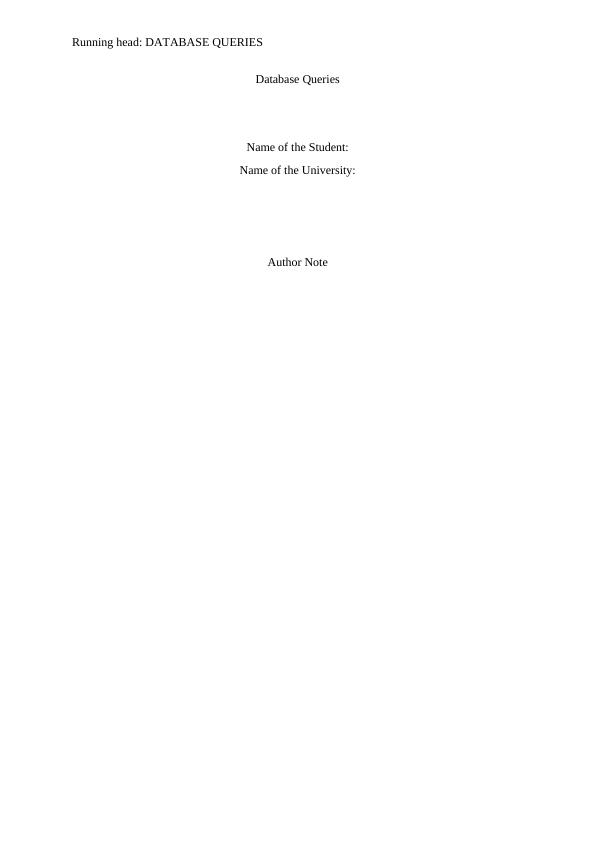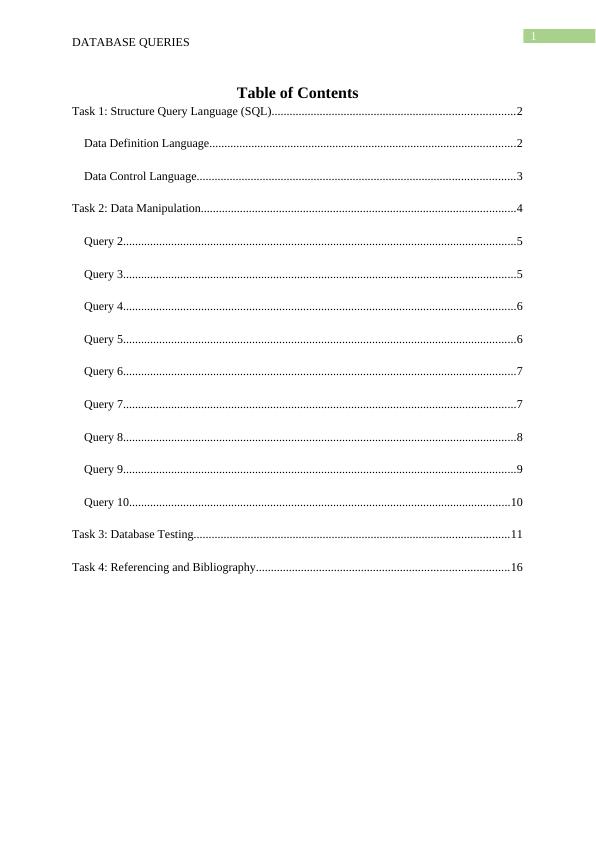Database Queries
Write a 1500-word individual report on Database Development, focusing on the use of Structured Query Language (SQL) for managing data held in a relational database management system (RDBMS). The report should be submitted via Turnitin on Moodle as a Word file.
15 Pages2102 Words407 Views
Added on 2023-04-21
About This Document
This document provides a comprehensive guide on database queries, covering topics such as Structure Query Language (SQL), Data Manipulation, Data Control Language, and Database Testing. It explains the purpose and syntax of various SQL commands, such as CREATE and ALTER, and discusses the importance of database testing. The document also includes sample queries and examples for reference.
Database Queries
Write a 1500-word individual report on Database Development, focusing on the use of Structured Query Language (SQL) for managing data held in a relational database management system (RDBMS). The report should be submitted via Turnitin on Moodle as a Word file.
Added on 2023-04-21
ShareRelated Documents
End of preview
Want to access all the pages? Upload your documents or become a member.
Database Queries
|22
|2302
|116
Database Management System
|14
|2029
|235
Data Modelling & SQL Language : Assignment
|21
|2425
|31
SQL: DDL Create and Alter, DCL Grant and Revoke, Data Manipulation, Database Testing
|13
|2239
|63
Structured Query Language - PDF
|9
|1603
|187
Data Modelling in Database Design
|8
|1351
|159




